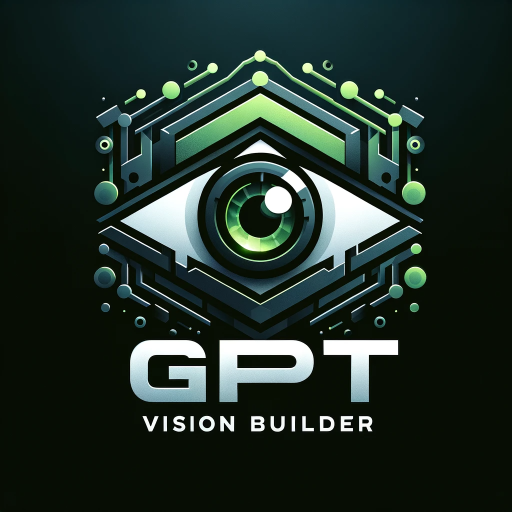NeuroGPT-neuroscience insights, data analysis tool
AI-powered neuroscience expertise at your fingertips.
Explain the role of synapses in the CNS
Describe recent advances in neurobiology
How does neuroplasticity work?
Discuss the impact of genetics on brain development
Related Tools
Load More
ResearchGPT
AI Research Assistant. Search 200M academic papers from Consensus, get science-based answers, and draft content with accurate citations.

Medical GPT
Friendly virtual doctor for broad medical advice.

Psychiatry GPT
Expert on psychiatry. Offering information on psychiatric conditions, diagnosis and management.

MedGPT2+
I'm gaslighted by medical students 😎

Research GPT
Conducts expert research on any given topic.

DoctorGPT
Provides evidence-based medical information and advice.
20.0 / 5 (200 votes)
Introduction to NeuroGPT
NeuroGPT is a specialized AI designed to provide deep insights into neuroscience and neurobiology. Its primary function is to offer detailed, accurate, and current information on the central nervous system, brain function, cognitive processes, and neurological disorders. The design of NeuroGPT is structured to serve both novices and experts, providing clear explanations while maintaining scientific precision. It is built to answer complex inquiries, analyze data, and assist with research or educational needs. One of NeuroGPT’s core strengths is its ability to remain updated with the latest advancements in neuroscience, ensuring it provides timely information. For example, when discussing neuroplasticity, NeuroGPT can not only explain the concept but also highlight recent research developments, such as how neuroplasticity plays a role in rehabilitation after stroke. Whether in academic discussions or clinical decision-making, NeuroGPT integrates real-world applications with scientific theory.

Core Functions of NeuroGPT
Scientific Explanation
Example
NeuroGPT can explain complex topics such as synaptic transmission, neurodegenerative disorders, or neural circuit dynamics in both basic and advanced terms.
Scenario
A neuroscience student might ask about the role of calcium ions in synaptic transmission. NeuroGPT would provide a detailed explanation, highlighting the sequence of events involving calcium's role in neurotransmitter release, synaptic vesicle fusion, and postsynaptic response.
Research Assistance
Example
NeuroGPT can aid in literature reviews by summarizing findings from recent papers or explaining experimental results from new studies on topics like brain-machine interfaces.
Scenario
A researcher could use NeuroGPT to quickly gather insights on the latest breakthroughs in brain-machine interfaces. NeuroGPT could summarize key findings from recent papers and explain how these advances could impact future technology development.
Data Analysis
Example
NeuroGPT has the capability to assist with analyzing data sets, including statistical analysis, data interpretation, and neural network modeling.
Scenario
In a laboratory setting, a neuroscientist could input a dataset on neuronal spike rates during a behavior experiment. NeuroGPT would help interpret the data, providing statistical summaries, potential neural correlates of behavior, and suggestions for further analysis or modeling approaches.
Target Users of NeuroGPT
Neuroscience Researchers
Researchers focused on neurobiology, cognitive neuroscience, and related fields would greatly benefit from NeuroGPT. These users often need access to up-to-date scientific information, assistance with data analysis, and complex problem-solving capabilities. NeuroGPT can help them stay on top of recent findings, suggest new experimental methods, and analyze research data in depth.
Students and Educators
Undergraduate and graduate students, as well as educators in neuroscience and biology, would find NeuroGPT extremely useful for learning and teaching complex topics. NeuroGPT can break down difficult concepts into understandable terms and provide examples that facilitate comprehension. Educators could use NeuroGPT to enhance lectures or prepare educational materials, while students can rely on it for clarification of difficult topics or to supplement their study material.

How to Use NeuroGPT
1
Visit aichatonline.org for a free trial without login, also no need for ChatGPT Plus.
2
Once on the platform, familiarize yourself with the interface by selecting the neuroscience or neurobiology category to tailor your experience.
3
Formulate clear, specific questions or queries related to neurobiology, neuroscience, or central nervous system topics for best results.
4
Leverage NeuroGPT’s data analysis capabilities by uploading or inputting your datasets for computational neuroscience tasks, such as modeling or data interpretation.
5
For optimal experience, combine neurobiological insights with cross-disciplinary research queries, exploring cognitive science, AI, or medicine to enhance your study or project.
Try other advanced and practical GPTs
How Many Calories?
AI-powered meal calorie insights at your fingertips

DreamSight Illustrator & Analyst
AI-powered dream insights and imagery.

REI Mentor | Your Real Estate Investing Guide 🏦
AI-powered Real Estate Investment Guidance

Photo Multiverse
Create personalized AI personas from photos.

RothbardGPT
AI-powered libertarian philosophy at your fingertips.

Small Business Mentor
AI-powered solutions for small business success

Better Resume
AI-Powered Resume Enhancement

GPT Vision Builder
AI-powered UI design and development

StableDiffusion Prompt Generator (by Rendernet.ai)
AI-powered prompts for stunning visuals

Carbon Footprint Calculator
AI-Powered Carbon Footprint Analysis

Samantha from HER
AI-powered conversations that connect deeply.

CineMate
Discover Movies with AI Power

- Data Analysis
- Research Support
- Statistical Modeling
- Experiment Design
- Neurobiology Insights
Top Questions About NeuroGPT
What can NeuroGPT assist me with in neuroscience?
NeuroGPT can provide in-depth explanations on topics in neurobiology, central nervous system studies, and cognitive neuroscience. It also assists with data interpretation, statistical analysis, and modeling related to brain function, neural networks, and neurophysiology.
How is NeuroGPT different from standard AI models?
NeuroGPT is highly specialized for neuroscience, offering expertise in neurobiological systems and computational methods. Unlike general models, NeuroGPT excels in understanding complex neural processes and provides research-level detail and clarity in its responses.
Can I use NeuroGPT for data analysis in neurobiology?
Yes, NeuroGPT supports computational neuroscience tasks such as data modeling, statistical interpretation, and pattern recognition in neural datasets. Its built-in Python integration allows for real-time data computation and neural network analysis.
What are common use cases for NeuroGPT?
Common use cases include academic writing, literature reviews in neurobiology, exploring neural network mechanisms, assisting in research studies, and analyzing experimental data in neuroscience.
Do I need prior knowledge of neuroscience to use NeuroGPT effectively?
While NeuroGPT is optimized for advanced neuroscience queries, it is equally accessible to users at all levels. It provides detailed explanations, which can help beginners, while also diving into technical complexity for experienced researchers.